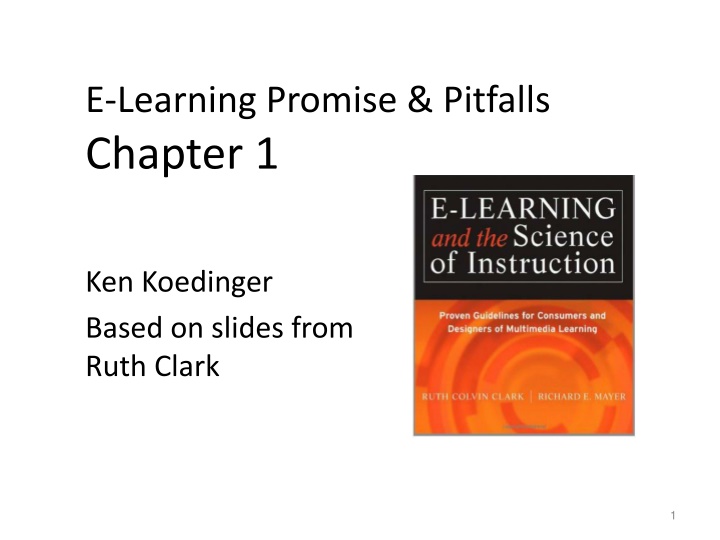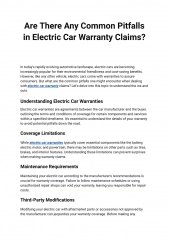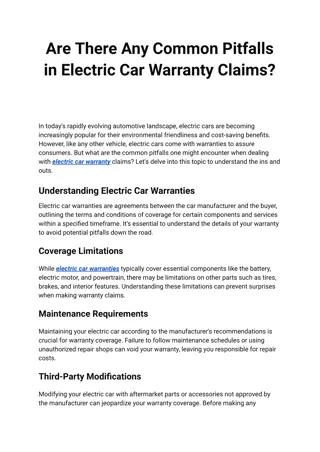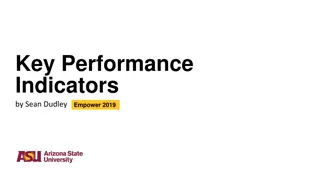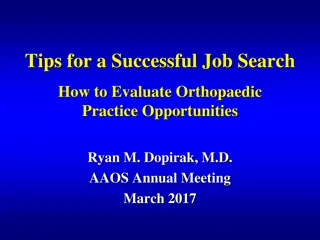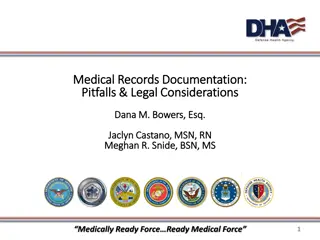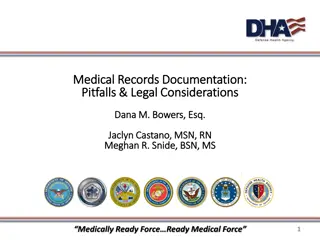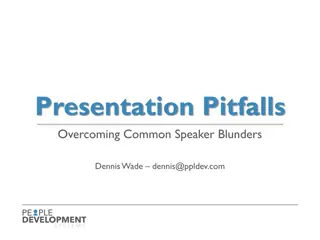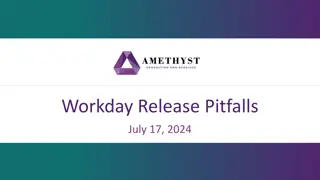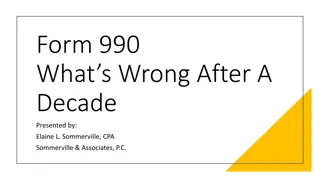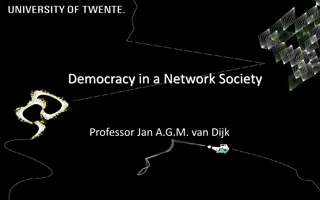Evaluating E-Learning: Promises & Pitfalls
This chapter delves into evaluating research evidence on media in e-learning, classifying types of e-learning, understanding timing and architectural aspects, and identifying the good and bad sides of e-learning. Explore asynchronous and synchronous e-learning, instructional methods, and the role of media elements in promoting learning.
Download Presentation

Please find below an Image/Link to download the presentation.
The content on the website is provided AS IS for your information and personal use only. It may not be sold, licensed, or shared on other websites without obtaining consent from the author.If you encounter any issues during the download, it is possible that the publisher has removed the file from their server.
You are allowed to download the files provided on this website for personal or commercial use, subject to the condition that they are used lawfully. All files are the property of their respective owners.
The content on the website is provided AS IS for your information and personal use only. It may not be sold, licensed, or shared on other websites without obtaining consent from the author.
E N D
Presentation Transcript
E-Learning Promise & Pitfalls Chapter 1 Ken Koedinger Based on slides from Ruth Clark 1
Chapter 1 objectives Evaluate research evidence on media comparisons Classify kinds of e-learning Timing: synchronous & asynchronous Lessons: inform, perform procedure or perform principle Architectures: receptive, directive, or guided discovery Identify the good, bad, & ugly of e-learning Promises & pitfalls 2
Overview What is e-learning & is it better? Promises & pitfalls Inform vs. perform Three e-learning architectures 3
What is e-Learning? Instruction delivered on a digital device that: Includes content relevant to learning objective Uses media elements such as words & visuals to deliver content Uses instructional methods such as examples, practice & feedback to promote learning Helps learners build new concepts & skills 4
Asynchronous e-learning Content + Media Elements + Methods Lesson 2: Working with Formulas Self-study Anywhere Anytime Using Spreadsheets in your Small Business Play> All Excel formulas begin with an equal sign. Formulas also can include cell references, mathematical operators, and numbers. Using a cell reference allows you to quickly update your calculations when your data changes. Click on the play button on the spreadsheet above to see a short demonstration. 5
Synchronous e-learning Content + Media Elements + Methods Instructor-led Same time Anywhere When recorded => asynchronous 6
E-Learning in your organization (or one you are familiar with) A. Percentage of overall digital instruction? B. Percent e-learning asynchronous? C. Percent e-learning synchronous? D. Percent available both asynchronously and synchronously E. Topics
See Association for Talent Development website Report on industry trends http://www.astd.org/Professio nal-Resources/State-Of-The- Industry-Report Job opportunities: http://jobs.astd.org/ 8
Where do students learn better? A. Classroom B. Computer
Media comparison studies A B C How to Read a Micrometer Slide 10
Media comparison studies A B C When Instructional Methods are the same, no differences in learning! 11
Found at http://www.teacherstoolbox.co.uk/T_effe ct_sizes.html See also http://www.tdschools.org/wp- content/uploads/2013/08/The+Main+Ide a+-+Visible+Learning+for+Teachers+- +April+2013.pdf 13
Overview What is e-learning & is it better? Promises & pitfalls Inform vs. perform Three e-learning architectures 15
Promises of e-Learning Customized Training Engagement in Learning Multimedia Acceleration of Expertise through Scenarios 16
Customized instruction incorrect correct QUESTION REVIEW NEXT TOPIC 17
Engagement in learning Using Spreadsheets in your Small Business Lesson 2: Working with Formulas Which formula is most efficient to calculate all commissions: = B4*B9 = B4/B9 =B4*$B9$ =B4*$B$9 X Incorrect. To apply the same formula to all sales staff, you need to use absolute cell references in which the column and row values are preceded by a $. Try Again. 18
The engagement matrix Low High Psychological Activity Low High Behavioral Activity 19 Adapted from Stull and Mayer, 2007
Multimedia Lesson 2: Working with Formulas Using Spreadsheets in your Small Business Other Outsourcing Play > Internal (Salaries, Development, Admin) can include cell references, mathematical operators, and numbers. Using a cell reference allows you to quickly update your calculations when your data changes. Click on the play button on the spreadsheet above to see a short demonstration. All Excel formulas begin with an equal sign. Formulas also 20
Pitfalls of e-Learning Too Much of a Good Thing Not Enough of a Good Thing Losing Sight of the Goal Discovery Learning 22
Too much of a good thing Other Outsourcing Internal (Salaries, Development, Admin) 23
Not enough of a good thing Other Outsourcing Internal (Salaries, Development, Admin) 24
Losing sight of the goal Introduction Using Spreadsheets in your Small Business Did you know .? 300px-VisiCalc_%28IBM_PC%27s_Killer_Application%29 VisiCalc Dan Bricklin , one of the inventors of the electronic spreadsheet, watched his university professor create a table of calculation results on a blackboard. When the professor found an error, he had to tediously erase and rewrite a number of sequential entries in the table. This gave Bricklin the idea to replicate the process on a computer, using the blackboard as the model to view results of underlying formulas. This idea resulted in VisiCalc the first electronic spreadsheet which became the killer app for the Apple II computer! 25
Discovery learning Other Outsourcing Internal (Salaries, Development, Admin) 26
Overview What is e-learning & is it better? Promises & pitfalls Inform vs. perform Three e-learning architectures 27
Goals: Inform Vs perform Inform Perform To present information To build skills 28
Perform goals: Near Vs Far transfer Near Far To build procedural skills Routine tasks To build strategic skills Problem-solving tasks 29
Practice: Near vs Far Transfer A. Changing a tire B. Conducting performance review C. Calibrating a zygometer D. Flying Boeing 747 E. Baking a pie 30
Overview What is e-learning & is it better? Promises & pitfalls Inform vs. perform Three e-learning architectures 31
Three architectures 1.Receptive 2.Directive 3.Guided Discovery Other Outsourcing Internal (Salaries, Development, Admin) 32
Receptive 33
Directive Lesson 2: Working with Formulas Using Spreadsheets in your Small Business Play > All Excel formulas begin with an equal sign. Formulas also can include cell references, mathematical operators, and numbers. Using a cell reference allows you to quickly update your calculations when your data changes. Click on the play button on the spreadsheet above to see a short demonstration. 34
Chapter 1 objective summary Evaluate research evidence on media comparisons Classify kinds of e-learning Timing: synchronous & asynchronous Lessons: inform, perform procedure or perform principle Architectures: receptive, directive, or guided discovery Identify the good, bad, & ugly of e-learning Promises & pitfalls 36
